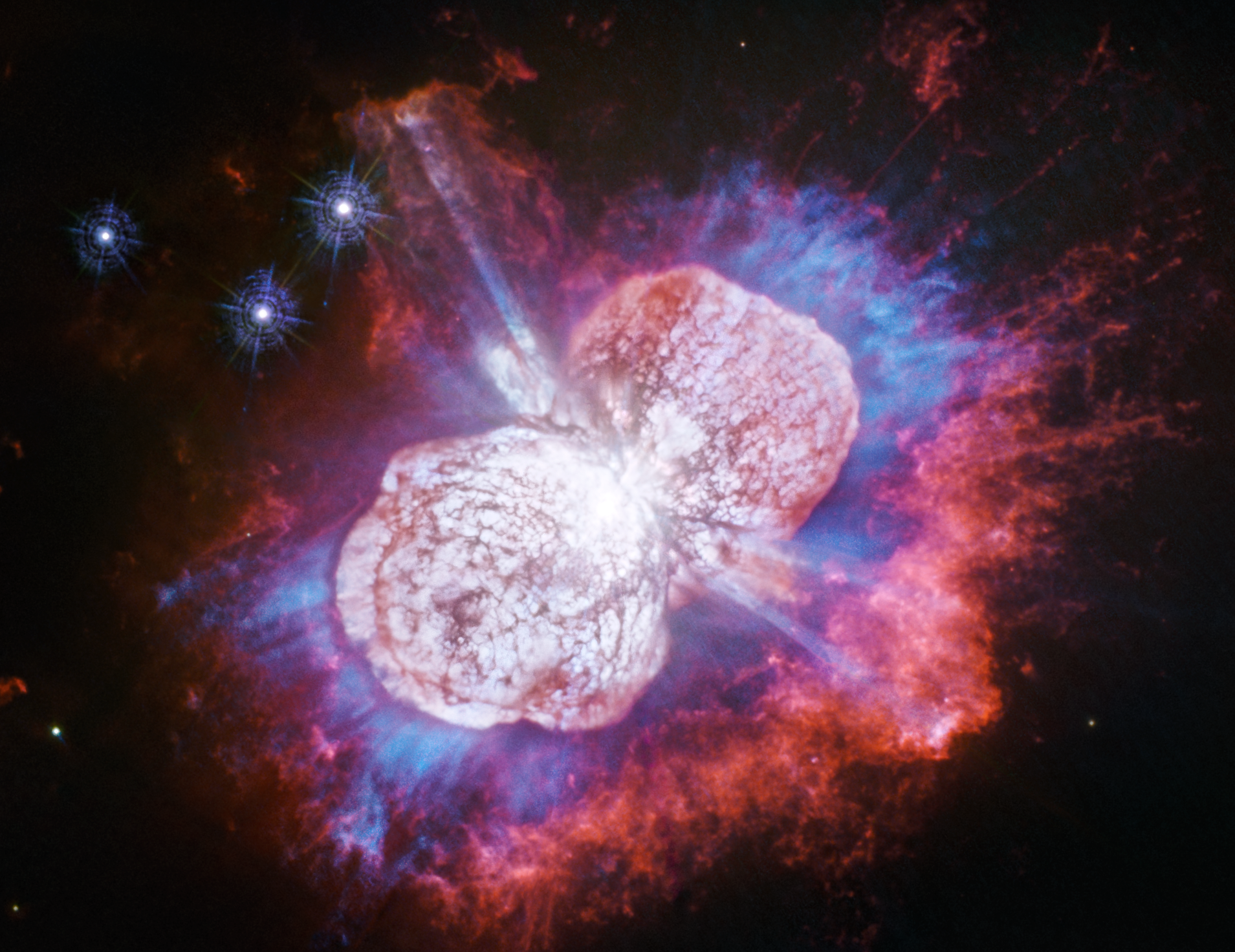Cosmic Fireworks Glow Red, White and Blue in Epic Hubble Photo

Like the United States of America, the universe has been celebrating its own existence with fireworks since its beginning — the Big Bang, in the univere's case. Now, 243 years after the U.S. came into existence and 13.8 billion years after the universe did, NASA researchers have discovered a distant star system exploding in festive red, white and blue light, roughly 5 million times brighter than Earth's sun.
In a gorgeous new ultraviolet photo taken by the Hubble Space Telescope, twin bulbs of light explode out of a gargantuan star system called Eta Carinae. Located about 7,500 light-years from the U.S., Eta Carinae actually consists of a pair of stars, one roughly 50 times the mass of the sun and the other as much as 250 times more massive. They have been blowing their tops for about 170 years.
This picturesque eruption of gas and dust began in about 1837, when astronomers noticed that Eta Carinae had grown significantly brighter overnight. This was the start of an 18-year period known as the Great Eruption, during which Eta Carinae briefly became one of the brightest objects in the sky.
This vast magnesium ring was detected for the first time in Hubble's latest observations of the distant nebula. This second ring of hot gas exists where there should be an empty swath of space; its unexpected presence reveals that the Great Eruption may have been even greater than previously believed, said Nathan Smith, an astronomer at Steward Observatory at the University of Arizona.
"This extra material is fast, and it 'ups the ante' in terms of the total energy for an already powerful stellar blast," Smith said in a NASA statement.
Studying the gassy debris ejected by Eta Carinae will give astronomers a better idea of what the Great Eruption looked like, maybe even hinting at what caused that event in the first place. The clock is ticking, as Eta Carinae will probably erupt again within the next million years, this time in a devastating supernova explosion. With the Great Eruption moniker already taken, astronomers will have to get creative when naming that epic show of cosmic fireworks.
- The 12 Strangest Objects in the Universe
- 15 Amazing Images of Stars
- 9 Strange Excuses for Why We Haven't Met Aliens Yet
Originally published on Live Science.
Sign up for the Live Science daily newsletter now
Get the world’s most fascinating discoveries delivered straight to your inbox.

Brandon is the space/physics editor at Live Science. His writing has appeared in The Washington Post, Reader's Digest, CBS.com, the Richard Dawkins Foundation website and other outlets. He holds a bachelor's degree in creative writing from the University of Arizona, with minors in journalism and media arts. He enjoys writing most about space, geoscience and the mysteries of the universe.









